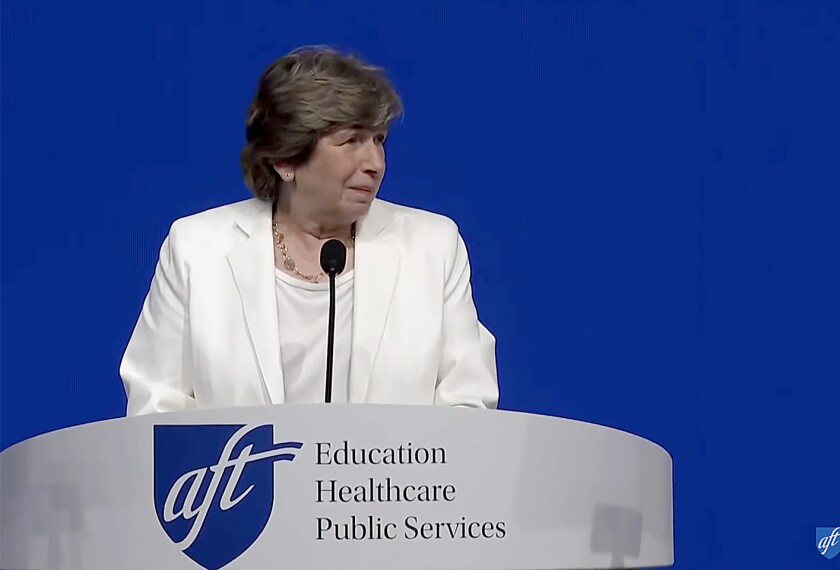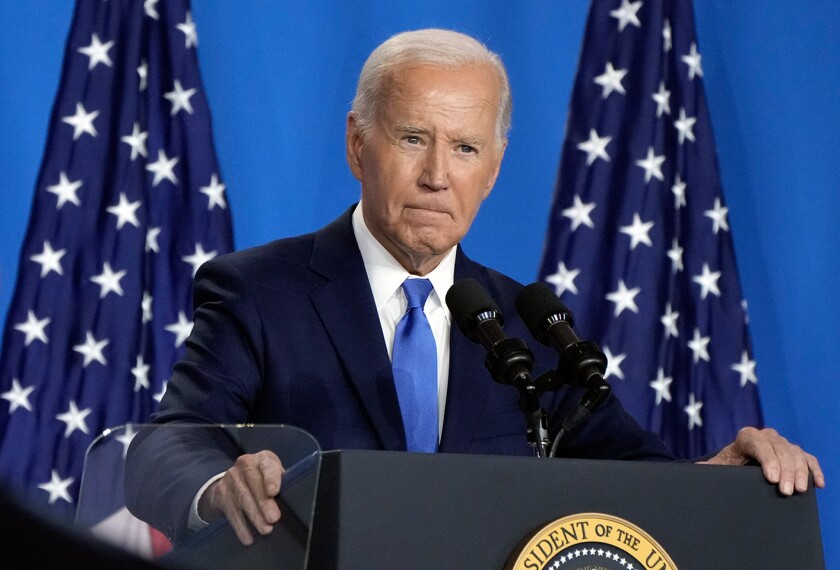Classroom tools and technology are changing too fast for traditional research to keep up without significant support to identify best practices and get them into the classroom.
That was the consensus of state education leaders, equity advocates, and ed-tech experts at a symposium on the future of education research and development, held to standing-room-only on Capitol Hill Thursday.
“We know instinctively that what works to teach an 8th grader in Houston who is behind grade level in reading isn’t necessarily the same as what it takes to teach a 1st grader in rural New Mexico how to read, or that what worked for us when we were in high school might not work for kids entering high school today,” said Sara Schapiro, senior fellow and director of social innovation for the Federation of American Scientists, who leads the Alliance for Learning Innovation, a coalition of groups aiming to improve education research. “But without a robust R&D system, we simply can’t know what works, for whom, and under which conditions.”
The Alliance has called for Congress to update its R&D priorities for education research and budget $1.95 billion for research and development at the STEM Education directorate at the National Science Foundation and $900 million for R&D at the U.S. Department of Education’s Institute of Education Sciences. That would require something of a reversal from Congress. From fiscal years 2022 to 2023 Education Department research and development declined from $390 million to $349 million according to the Congressional Research Service.
“What works in terms of effective [education] interventions, programs, and services has always been accessible and available to more affluent communities,” said Augustus Mays, the vice president of partnerships and engagement at the Education Trust, a nonprofit focused on educational equity. “But for those who haven’t had the same opportunities or the same resources, that hasn’t always been available to them. Evidence-based policy making, to me, has always been the difference maker.”
Mays pointed to the move to focus federal pandemic relief money on tutoring programs whose design showed evidence of effectiveness, such as individual or very small groups, and using an aligned curriculum in sessions at least three times a week. This model differed from tutoring provided under the No Child Left Behind Act’s supplemental education services, which were repeatedly found to have no benefit for student achievement—in part because programs varied significantly from district to district.
Richard Culatta, chief executive officer of the International Society for Technology in Education, said education technology is changing classroom practices too quickly for educators to depend on a traditional research grant cycle.
“A five-year [randomized controlled trial] is not going to be very helpful right now, when apps and [artificial intelligence] are changing very quickly and every two weeks there’s a completely new set of functionality,” Culatta said. “We’ve got to think about new approaches to doing that research.”
Education research needs to move faster and be more useful to teachers, experts argue
There has been some growing traction in Congress to create a fifth center within IES dedicated to “quick turnaround, high-reward research,” dubbed the National Center for the Advanced Development and Education.
The Obama administration in 2011 attempted to make such an R&D center, intended as the education equivalent of the Defense Department’s Advanced Research Projects Agency, the Defense Department’s bleeding-edge research project, credited with developing things like the Internet, stealth technology, and global positioning systems. That attempt failed but helped spawn Investing in Innovation, or i3, grants. I3 has been lauded for helping scale up promising programs and critiqued for still having a yearslong evaluation timeframe and limited success, with only 12 of the 67 completed i3 evaluations showing any benefit for student achievement.
“We need a research agenda that drives a more thoughtful conversation, that isn’t just about what we fund,” Culatta said. Future education research, he said, must be “co-created with educators, where the end goal is not just publishing in a peer-reviewed journal; it’s making [an] impact and demonstrating impact.”
Research policymakers also urged Congress and states to provide more support to ensure teachers stay abreast of the best evidence on learning. “We can learn a whole lot from the research community about how to make learning better and more effective—and if we walk into schools and we’re still talking about ‘left-brain, right-brain’ and ‘learning styles,’ none of that is having the impact that it needs to,” Culatta said, referring to two popular but long-disproven ideas about student learning.
Maryland’s state superintendent Carey Wright agreed. Wright previously led Mississippi’s public schools, where she spearheaded the state’s “science of reading” initiative. Wright said it was easy to find research-backed reading practices, but much more difficult to ensure that all educators understood them.
“I said to my team, ‘We’re not going to assume that anybody knows how to do [science-based reading practices],’ because we had a whole lot of balanced literacy going on,” Wright said. “We were going to stick with what the research has to say that we know works, so we retrained every teacher in the state eventually.”






